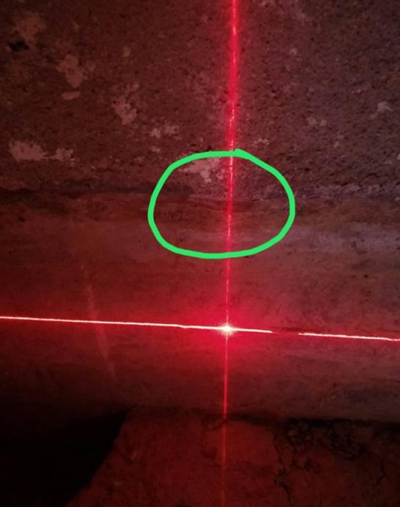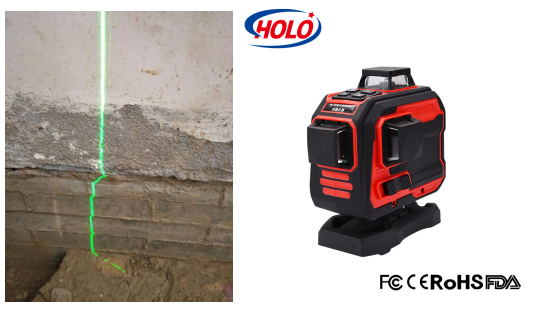Construction lasers actually still use the principle of gravity suspension to find the vertical direction and the workpiece to hit the horizontal direction at right angles And the photoelectric light replaces the pull line and ink. Many people who only know one thing but not the other still build crooked walls and find the side slant. The following problems need to be solved during use to get twice the result with half the effort.

The light always propagates in a straight line. However, the wall or surface where the light is located is not necessarily flat or tilted. If the construction lasers are placed vertically on the wall, its vertical light is still a slant line when it hits the wall with a forward and backward tilt, and a horizontal light is still not horizontal when it hits the crooked wall.

The wall shown in the green circle in the figure is concave, but because the construction laser is placed vertically, the light is still a straight line on the wall, but the light here is inevitably distorted when the instrument is placed at a certain angle.
So we need to figure out what the purpose of placing the construction is? It is not to pursue the light on the wall to keep a straight line. On the contrary, the location of the construction laser is chosen to find the defects of the wall. In order to pursue a straight line of light on the wall, it is a bit self-deceptive to deliberately place it “vertically”, which is also the reason why some people go astray.
The traditional hanging hammer hanging line can be considered as a vertical line no matter where it is hung and it is still, and this line is vertical in all directions. The difference of the construction laser level is that its light depends on the surface it illuminates. Its essence is the intersection of two surfaces. Although the surface swept by the light is a vertical surface, the solid surface intersecting with it is not necessarily a vertical surface, so the light emitted is not necessarily a vertical line, not an absolute vertical line in space, but the traditional hanging hammer is.
If you want to detect whether this wall is vertical, you can make the ground light leave the bottom edge of the wall at an equal distance along the bottom edge of the wall, and then see whether the distance from the top edge or the upper part of the wall to the light is equal to make a simple test. This method can also measure the flatness of the wall, similar to the use of laser level. Of course, the simplest way is to put the construction laser on the side, and project vertical light at a certain angle (45 degrees) to detect whether the wall is tilted forward or backward.
Entities in space require two directional dimensions. A wall needs to be vertical in both the front and thickness directions to be a qualified wall. Placing a construction laser in the vertical direction (upright) just cannot tell whether the wall is leaning forward or backward.
Whether it is bricklaying or carpentry, the work of “cornering” is still important. The ideal construction lasers should be set up near the 45-degree bisector of the angle to ensure the vertical accuracy of the angle edge at one time, otherwise one direction error will be greater than the other.
HOLO laser has gained years experience in OEM for high-end foreign brands. Its workmanship and quality are comparable to Bosch and Leika, but its price is much lower. HOLO laser instrument stands out with below advantages:
1. Intelligent battery overload protection, resist high-frequency vibration, and it is safer to use.
2. The magnetic damping compensation system is adopted. Within the tilt of 3°, the standard can be quickly adjusted to achieve automatic leveling.
3. The newly upgraded 1800mAh super-large lithium battery pack can be connected to an external backup power supply to achieve ultra-long battery life.
4. Adhesive coating is highly corrosion-resistant and protects the movement for long-term use.
5. It is shock-resistant, drop-resistant and dust-proof, and is suitable for a variety of harsh working environments.
